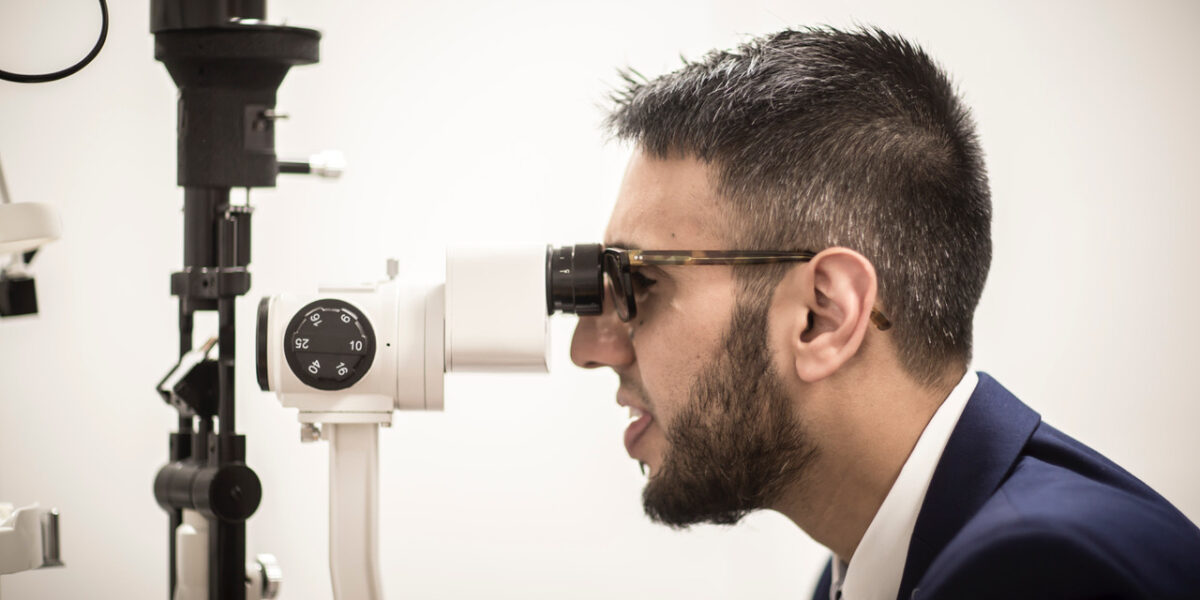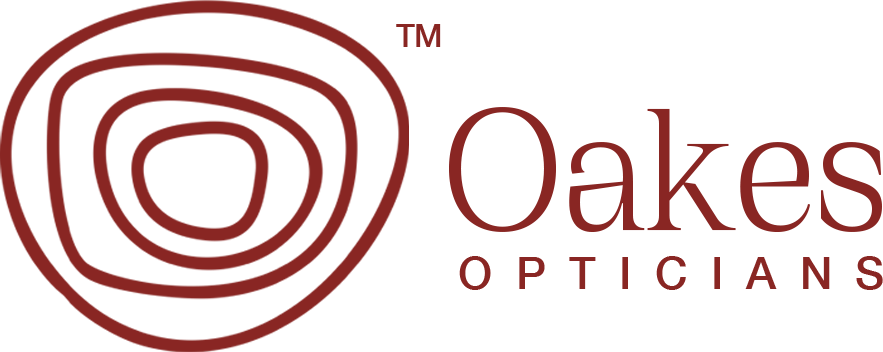
Optometrists test more than just your eyes!
At Oakes Opticians in Huddersfield, our friendly, fully qualified optometrists will conduct a thorough eye examination to establish the standard of your eyesight and the overall health of your eyes. We’ll look for any early signs of cataracts,glaucoma and other conditions. Problems such as diabetes, high blood pressure and vascular disease can also be detected, as the eye can give clues to general health as well as eye conditions.
The optometrist will advise you if any vision correction will be needed, or whether a new prescription is required. You will be given a lens prescription, if necessary a written report, and advised when your next eye examination will be due. If signs of any condition or general health problem are detected, we may carry out additional eye tests which may lead to a referral to your doctor or an ophthalmologist for further investigation.
If you have never had an eye test before then don’t worry! The process is very simple and will last about 30 minutes. Your eye test will include some or all of the following checks:
Visual acuity
This test checks your level of vision and is a fundemetal part of the eye test. Most will recognise reading letters from a chart. At Oakes Opticians we invest in the latest technology and have a computerised test chart which produces random letters. So no more memorising letters, sorry! This all leads to a more accurate result.
Autorefractor
An autorefractor is used during an eye test, which assists us in providing the best visual correction. Your Optician will use the autorefractor to examine how the eye processes light. Any refraction anomalies can help to determine if you need prescription glasses or contact lenses to correct your vision. The autorefractor examination only takes a few seconds and is completely painless.
Non contact tonometer
A non-contact tonometer is an instrument which measures the pressure inside your eyes, known as intraocular pressure. A puff of air is directed into the eye, measuring intraocular pressure based on the eye’s resistance to the air. It only takes a couple of seconds to perform and can give your Optician valuable information about the health of your eye and any indicators of more serious eye conditions. Caught early, these can easily be corrected and treated.
Visual field test
The visual field screener is used to determine your field of vision and locate any ‘blind spots’ within that field. During the test, you will be asked to look at a spot in the centre of the machine and respond lights flashing around this central target. This test is repeated several times in both eyes.
Ophthalmoscope
The ophthalmoscope is used to examine the retina at the back of your eye. This will determine the condition of the blood vessels and the head of the optic nerve, and can also detect any changes in the health of this area that may indicate underlying diseases such as diabetes, high blood pressure or macular degeneration. Another way of examining your retina is by using a slit lamp bio-microscope and volk lens, which your Optician uses in combination to see a magnified image of your retina.
Retinoscope
Another tool which is used to help determine your final prescription is the retinoscope. It measures the refractive error of your eye to determine the proper prescription for any corrective lenses that might be needed. By observing how the eye processes a beam of light, your optician can determine if you suffer from myopia (short sightedness) or hypermetropia (long sightedness) or if you have astigmatism.
Slit lamp
The slit lamp is an illuminated microscope used mainly to examine the outer surface of your eyes, eyelids, lashes and surrounding areas Your Optician can then look at the condition of the cornea, sclera, conjunctiva, the iris and the lens. This checks the condition of the outer surface of the eye and can be used to look for abnormalities or scratches. The slit lamp examination is particularly important for contact lens wearers, as the lens sits directly on the surface of the eye. It is used to check the fit of contact lenses, and allows us to monitor any changes in your eyes due to contact lens wear.
